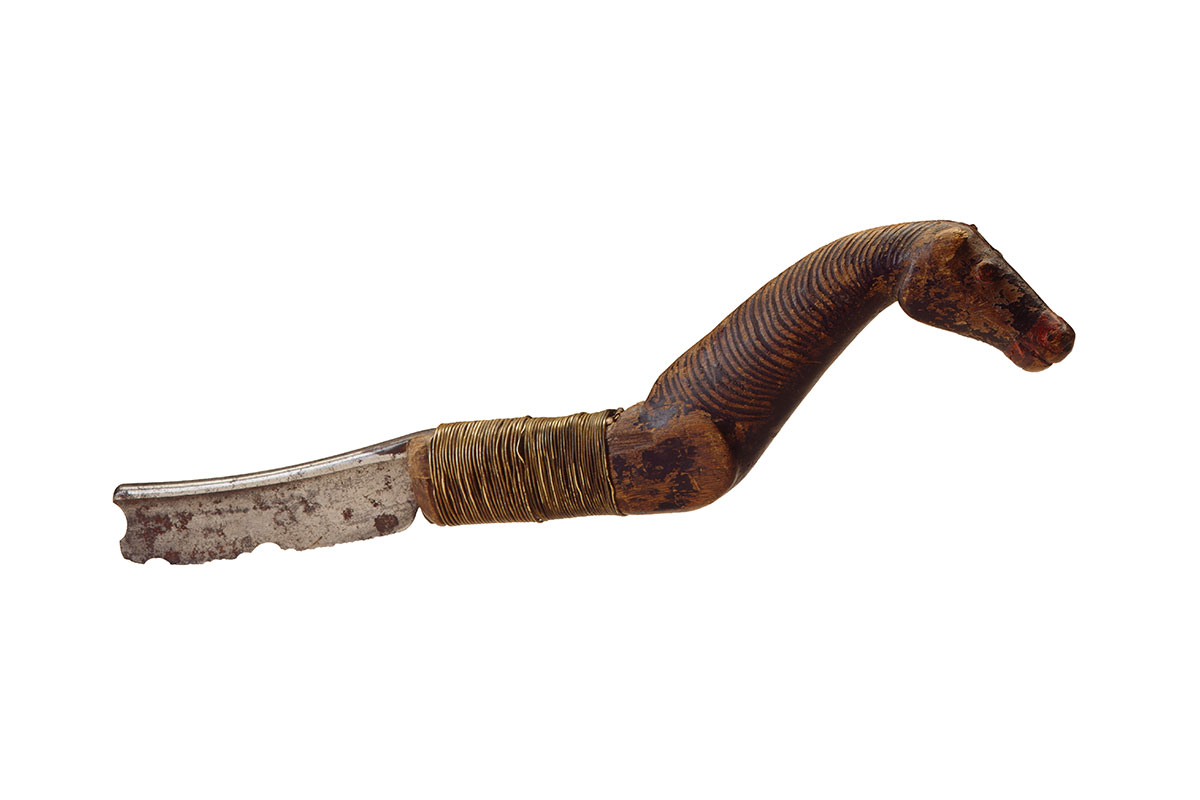Crooked Knife
Western Great Lakes
ca. 1850
wood, black paint, Chinese vermilion, metal, brass wire
width: 10"
Inventory # W1427
Sold
PROVENANCE
Trotta-Bono, Shrub Oak, NY
RELATED EXAMPLES
Detroit Institute of Arts, 81.293 - See: Art of the American Indian Frontier, Penney, University of Washington Press, 1992
Detroit Institute of Arts, 81.498 - See: The Mesquakie of Iowa, Torrence, University of Washington Press, 1989, pl. 147
A cooked knife is an essential woodworking tool used by many Native American peoples of the Woodlands. Also known as mocotaugan (from the Cree term mohkotakan), it was used from carving birchbark canoes and paddles to poles and storage vessels and has been described as one of the most important tools of the Woodlands peoples by non-Indigenous traders and missionaries. Most crooked knives are comprised of a relatively plain handle and a slightly curved blade set at an angle. This design allows for powerful strokes as the tool is drawn across the wood and towards the body. A number of crooked knives, such as the superb example pictured here, also exhibit animal effigies. Positioned above the grip, the handle is expertly carved in the shape of a horse’s head. Snout and eyes are coloured with red vermilion, while the rest of the figure is painted black. A slightly curved blade is held in place with brass wire wrap.

